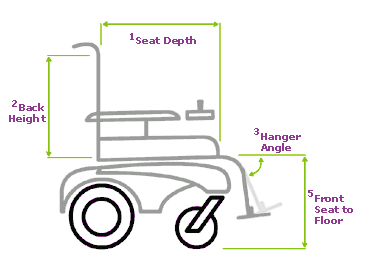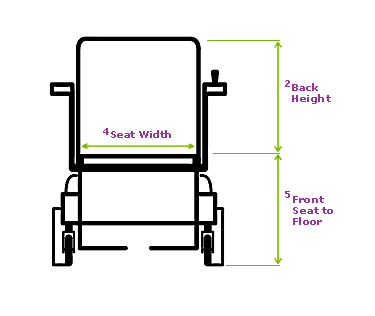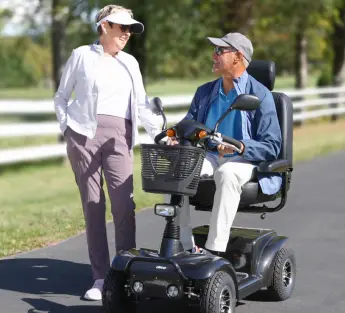Power Chair Measuring Guide
 |
|
 |
|
 |
| Seat
Depth1 Measure from the most posterior point of the body to the inside of the knee, minus at least two inches. Some prefer more leg overhang to make room for their hand when lifting their leg. Back Height2 Measured from the seat base to the top of the chair back. Power wheelchair riders need upper back support, particularly for the moment of initial acceleration. Hanger Angle3 Determines how far the toes extend away from the body, measured from the horizontal. A tighter angle allows the electric power wheelchair to turn around in less space. Depends in part on ability of the knee to bend towards the perpendicular. Seat Width4 Determined by the widest point of the body from knee to hip, plus an inch to ensure room to move. Consider bulk of clothing, particularly a heavy winter coat, if relevant. Front Seat to Floor5 Measure the leg from the back of the knee to the sole of the foot. Then subtract the thickness of the cushion when it is compressed. Next, add a minimum of two inches for footrest clearance. Electric power wheelchairs are almost never foot-propelled by the user - so excluding the additional two inch footrest height for propelling is very rare. |





 Contact Us
Contact Us
 M-F 9am - 6pm ET
M-F 9am - 6pm ET
 Request parts
Request parts Request Service
Request Service
